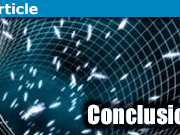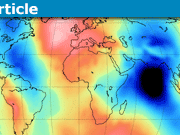The Oppenheimer-Snyder Model of Gravitational Collapse: An Overview
Most people who have spent any time at all studying GR are familiar with the Schwarzschild solution. (A series of Insights articles discusses the key properties of that solution.) Much of that familiarity probably derives from the fact that the Schwarzschild solution describes a black hole. However, for some reason, much less attention is paid to the simplest solution that describes the collapse of a massive object into a black hole. This solution was discovered by J. Robert Oppenheimer and Hartland Snyder in 1939 and is called the Oppenheimer-Snyder model. In this article, we will briefly sketch how this model is constructed, and examine its key properties.
Our starting point is an idealized massive object that is perfectly spherically symmetric, with constant density in its interior, of finite extent, and surrounded by vacuum. Of course, such an object is highly unrealistic. But it makes the math tractable, in the sense that we can find closed-form solutions for all of the equations of interest, instead of having to solve them numerically. When Oppenheimer and Snyder were developing their model, they could only hope that the drastic idealizations they were making would not make their model’s predictions irrelevant to real gravitational collapses. But today, we have plenty of computer simulations of more realistic collapse scenarios, and we know that in fact, all of the key properties of the Oppenheimer-Snyder model are still there in realistic models.
We assume that our massive object starts out static: in other words, every part of the object is at rest relative to every other part. This means that we can define a common rest frame for all parts of the object. We then assume that, at some instant of time in this common rest frame, the pressure everywhere inside this object is zero, and that it remains zero for all times after that instant. (Note that we are not making any assumptions about how the pressure became zero, or what happened before that, except that the object was static to the past of the instant of time when the pressure was zero. This is another highly idealized assumption, but as above, it still preserves the key properties of the model.) Since the object is spherically symmetric, there can be no shear stresses, and since it is at rest at this instant of time, it can have no momentum or energy flow. Therefore, if the pressure is also zero, the stress-energy tensor inside the object at this instant of time consists of its energy density, and nothing else.
We already know that, since we have assumed exact spherical symmetry, the spacetime geometry of the vacuum region of our model (i.e., from the surface of the massive object out to infinity) is the Schwarzschild geometry. We know this because of Birkhoff’s Theorem (a short proof of which you can see in the Insights article on that topic). So to obtain the initial conditions for our model, all we need is the spacetime geometry inside the object at the instant of time, in the object’s rest frame, at which the pressure is zero. We obtain this by noting that, since the geometry inside the object is spherically symmetric, and since the density is constant, we have an obvious candidate: a portion of a closed matter-dominated FLRW universe. We won’t try to prove here that this is the only possibility (though this can indeed be proved); we’ll just adopt it as our assumed initial condition since it satisfies all of the requirements, and that’s all that’s necessary for building a model.
Furthermore, since the object is at rest at the instant of time described above, we know something else about its interior: it is not just a portion of a closed matter-dominated FLRW universe, but such a portion at the instant of maximum expansion. This must be the case since that is the only instant at which all parts of the universe are at rest relative to each other.
So we now have a description of the geometry of the spacelike hypersurface at the instant of time described above: it is a portion of a 3-sphere bounded by a 2-sphere of some finite area, and outside that it is a Flamm paraboloid, i.e., a surface of constant Schwarzschild coordinate time in the Schwarzschild geometry.
Without doing a single line of math, we can now see, qualitatively, what the rest of the spacetime geometry, to the future of this spacelike hypersurface, looks like. The FLRW region will collapse in a finite time (by which we mean a finite proper time for an observer comoving with the matter in the region) to a singularity because that’s what a closed matter-dominated FLRW universe does from the point of maximum expansion, and the vacuum region outside it will be Schwarzschild because a spherically symmetric vacuum region has to be. At the instant at which the surface area of the FLRW region is equal to ##16 \pi M^2##, where ##M## is the total mass of the matter in the region, the surface of the collapsing matter will intersect the event horizon, which remains at that surface area everywhere to the future of that instant. (To the past of that instant, the surface area of the horizon decreases, until at some previous instant it is zero; that instant corresponds to the event on the worldline at the center of the matter region at which a radially outgoing light ray can be emitted that will reach the surface of the collapsing matter at the same instant that surface intersects the horizon. In other words, all such outgoing light rays form the generators of the horizon.)
Of course, Oppenheimer and Snyder did not have it this easy. They did not have the familiarity with the properties of the Schwarzschild and FLRW geometries that we have today. They had to crank through the math, and while the solution they obtained does indeed have the above properties, it still takes a fair bit of work to see them if you look at their paper directly. In a follow-up article to this one, I will walk through the same general line of reasoning they did, but making use of all that we have learned since 1939 about the Schwarzschild and FLRW geometries, as summarized in the qualitative description I gave above. But even without going through the details of that, we can see in broad outline that there must be a mathematical description of the solution that has the following properties:
(1) There is a timelike coordinate ##\tau## such that the ##\tau = 0## spacelike hypersurface has the geometry described above (a portion of a 3-sphere joined to a Flamm paraboloid at a 2-sphere of finite area);
(2) The ##\tau## coordinate gives the proper time of comoving observers, i.e., observers who fall radially along with the collapsing matter if they are inside it, or along radial infalling geodesics of the Schwarzschild geometry starting from rest at some finite altitude if they are outside the matter;
(3) There is a curvature singularity corresponding to areal radius ##r = 0##, and every comoving worldline ends on this singularity, at a time coordinate ##\tau## that is the same for all worldlines inside the collapsing matter, and then increases with increasing altitude outside the matter;
(4) There is a spacelike coordinate ##R##, with ##0 \le R < \infty##, such that each comoving worldline has a unique value of ##R## (which can be thought of as the areal radius at which that worldline is at ##\tau = 0##);
(5) The other two coordinates are the standard angular coordinates on a 2-sphere.
For now, I will leave it to the reader to verify that a coordinate chart must exist for this solution with the above properties. The details of what the metric looks like in these coordinates will be given in the follow-up article:
Oppenheimer-Snyder Model of Gravitational Collapse: Mathematical Details
References:
On Continued Gravitational Contraction
J. R. Oppenheimer and H. Snyder
Phys. Rev. 56, 455 – Published 1 September 1939
https://journals.aps.org/pr/abstract/10.1103/PhysRev.56.455
Misner, Thorne & Wheeler (1973), Section 32.4
- Completed Educational Background: MIT Master’s
- Favorite Area of Science: Relativity










Leave a Reply
Want to join the discussion?Feel free to contribute!